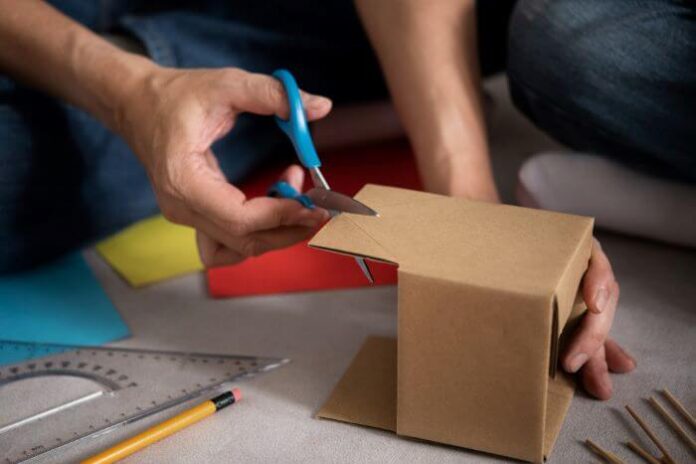In today’s marketplace, where competition is fierce, a product’s packaging can often be as critical as the product itself. Packaging is no longer a mere protective vessel or an instrument of logistical convenience; it’s a powerful marketing tool. It is now a canvas of brand storytelling and a driver of consumer experience.
Central to this evolution is the concept of customisation – a trend that is profoundly reshaping how consumers interact with products and brands. Unfortunately, not many people realized the power of customized packaging. Bad, right?
So, in this post, we will be taking a closer look at customized packaging. We will see what it is and how it can be a game changer for developing excellent customer experience. So keep reading!
The Rise of Customisation in Packaging
Customised packaging solutions involve the tailoring of a product’s packaging to meet specific consumer needs, preferences, or desires. This can range from aesthetic customisation, such as unique designs, colours, or textures, to functional customisation, such as user-friendly opening mechanisms or resealable features.
The rise of customisation in packaging is being fuelled by several factors. Firstly, advances in packaging technology and machinery have made it more feasible to produce custom packaging on a large scale. Another factor is the recent introduction of a fundamental shift in consumer behaviour and expectations, largely driven by the digital age’s influence.
Consumers today are seeking more personalised experiences, and they value products that reflect their identity and lifestyle. They are also more informed and discerning, often basing their purchase decisions not only on the product but also on the brand’s values and ethos, as communicated through the packaging.
How Is Customised Packaging Impacting on the Consumer Experience
Now let’s get to the meat of the matter. Let’s see some ways in which customised packaging is reshaping the consumer experience. Here are some of them.
#1: Enhanced Brand Engagement
Customised packaging provides an opportunity for brands to engage with consumers on a more personal level. It serves as a touchpoint for conveying the brand’s story, values, and personality.
For instance, incorporating elements such as the customer’s name or a personalised message on the packaging can forge a deeper emotional connection between the consumer and the brand, enhancing customer loyalty. It’s possible to do this with all sorts of packaging materials too, including cardboard, shrinkwrap films, and Tetra Pak.
#2: Differentiation in a Crowded Marketplace
In an overcrowded marketplace, customised packaging can help products stand out on the shelf. By offering a unique, eye-catching package, you can help your brand attract consumer attention and differentiate your products from competitors.
#3: Functional Benefits
Customisation can also bring functional benefits, enhancing the usability and convenience of the packaging. Examples could include resealable packs for food products, easy-open features for elderly consumers, or compact, portable designs for on-the-go consumption. These features can significantly improve the consumer’s experience and satisfaction with the product.
#4: Enhanced Unboxing Experience
With the growth of e-commerce and social media, the ‘unboxing experience’ has become a crucial aspect of consumer experience. A customised, well-designed package can make the unboxing process more enjoyable and memorable. It can significantly increase the perceived value of the product and hence, create positive word-of-mouth.
#5: Reflecting Consumer Values
Customised packaging can also be used to reflect consumer values, such as sustainability. An instance is a brand that uses packaging made from recycled or biodegradable materials to appeal to environmentally conscious consumers. As the number of people seeking to patronize businesses that embrace ecofriendly product packaging increase, you can position your brand at the top on their lists with customised packaging.
Navigating the Customisation Trend
While the benefits of customised packaging are evident, it’s crucial for businesses to approach this trend strategically. Not all types of customisation will be relevant or appealing to every consumer segment. Understanding your target audience’s preferences, needs, and values is paramount.
Other factors you will also need to consider are market research, consumer insights, and data analytics. All these can be invaluable tools in this regard.
Furthermore, while customisation can enhance the consumer experience, it should not come at the cost of functionality or sustainability. A well-designed package should balance aesthetics with ease of use, protection of the product, and environmental responsibility.
Final Note
Without any doubt, you would now agree that customised packaging solutions are a powerful tool for reshaping the consumer experience. It does not only offer opportunities for brand engagement but also set the tone for differentiation, functional benefits, and alignment with consumer values.
As consumer expectations continue to evolve, the industry must also adapt, leveraging technology, creativity, and consumer insights to deliver truly personalised packaging experiences.
However, while customisation can enhance the consumer experience, it should not exacerbate environmental issues. Companies must strive to make their customised packaging as sustainable as possible, considering factors such as material use, recyclability, and the packaging’s overall environmental footprint.







